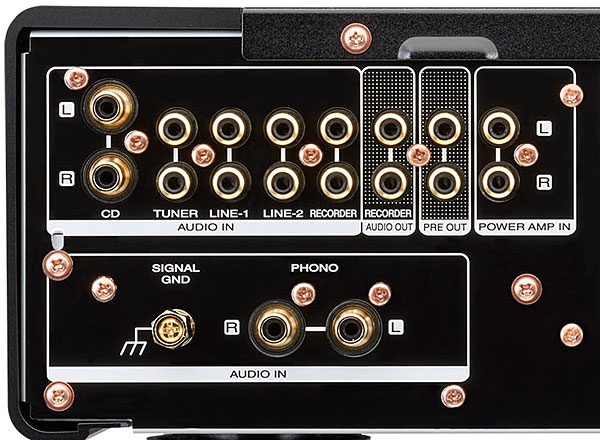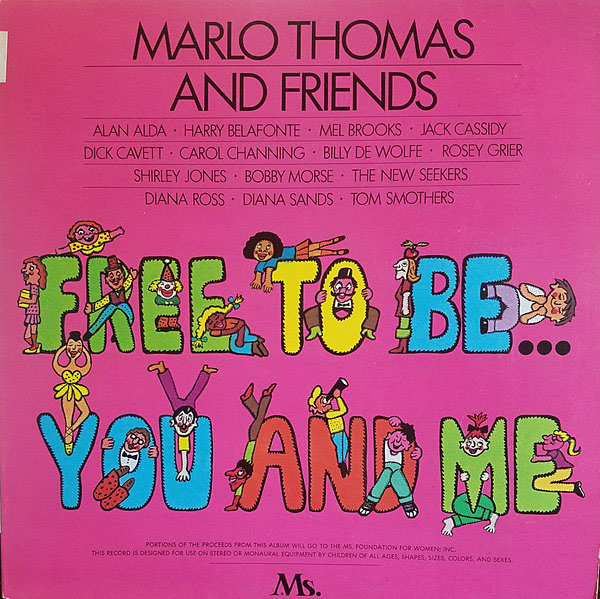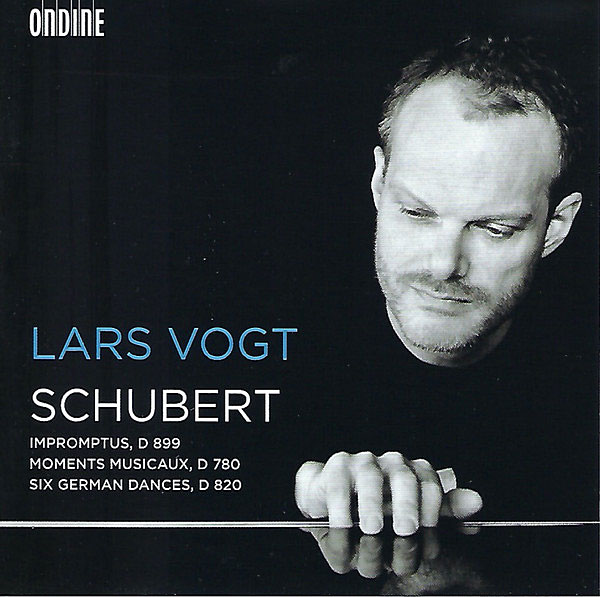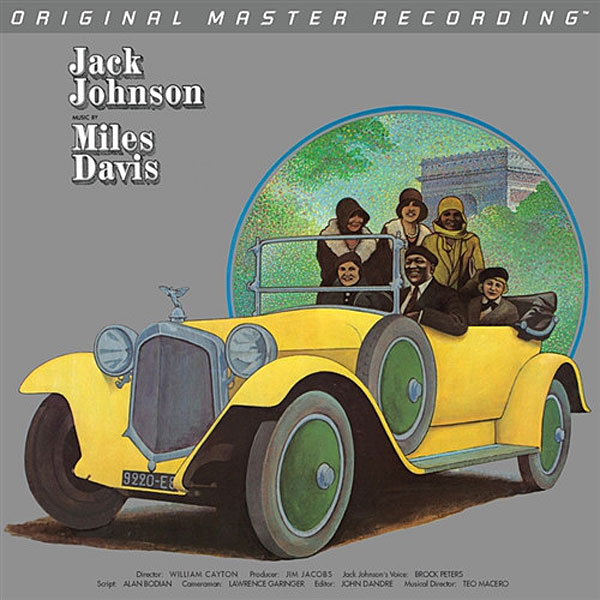| Columns Retired Columns & Blogs |
Great report.

I can't remember any stories, but I will never forget how one ceiling-mounted spotlight illuminated his record player and another highlighted a gleaming Marantz Model Thirty "Console Stereo Amplifier." To young me, his Marantz amplifier looked glamorous, like something out of Playboy magazine. I was mesmerized by its symmetrically arranged knobs and sliders. Its thick wood case almost matched the brown wood of the floor-to-ceiling bookcase, which almost matched the brown wood of the AR-3a loudspeakers nestled on shelves below.
I felt honored to be included in these cheesy soirees, and I remember thinking how my professor's extensive record collection and upscale audio system added an aura of worldly sophistication to our anthropology studies.
That was 50 years ago.
Since then, I've become a fully initiated audio tribesman, and today I am reviewing the new, futuristic-looking Marantz Model 30 integrated amplifier. As far as I can tell, the only thing it shares with its legendary ancestor is its name.
Description
On its back panel, the $2499 Marantz Model 30 says it's "Made in Japan." That declaration is surrounded by RCA pairs for CD input, Tuner input, Recorder input, Line 1 and Line 2 inputs, and Amplifier input. There is also a Recorder output and Preamplifier output. According to the Marantz website, the Model 30 drives loudspeakers with a class-D amplifier using the Hypex NC500 module, which is specified to produce 100Wpc into 8 ohms and 200Wpc into 4 ohms. That NC500 power exits via sturdy, expensive-looking speaker-wire binding posts.

The Model 30's back panel looks ordinary, even drab, but the front panel is visually striking in an appealing, understated way. It features a "floating" control panel with a centrally located circular display that harkens back to the meter on Marantz's uber-classic Model 9 amplifier. This floating, flat panel hovers in front of a larger, concave, moiré-patterned backplate illuminated by LEDs situated on the front panel's back edges. The power button sits discreetly on the backplate's left side, mirrored by a ¼" headphone jack on the far right.

My review units were black, and the control-panel knobs would have been invisible except for their discreet light gray labels, which were neither too big nor too small. The far-left knob selects inputs. To its right is a smaller knob, labeled MM, MC Low, Mid, High, for phono cartridge loading. To its right are Bass, Treble, and Balance controls. The larger knob on the far right is a smooth-moving Volume control.
Listening with Falcon LS3/5a's
I have spent most of my audiophile life, more than 30 years, listening to recordings through either my vintage Rogers LS3/5a or, lately, the new Falcon Acoustics LS3/5a loudspeakers. I admire these little BBC monitors now more than ever because their tone character is so perfectly right on: They show me how different each recording sounds from all the others. They show me how different amplifiers sound.
Up to now, though, the Falcon LS3/5a's have not responded well to class-D amplification, typically sounding dry and low-contrast. In fact, I might not have even tried the Falcons with the Marantz except that the Falcons were set up and running when the Model 30 arrived. I played a small bunch of fun records and soon realized those Hypex NC500 output modules were driving the LS3/5a with a lively, delicate, well-balanced ease.

The most fun record I played was the 1972 classic, Free to Be ... You and Me—Marlo Thomas and Friends (16/44.1 FLAC Arista-Legacy/Qobuz). This recording and its associated That Girl TV show were many Gen-Xers' first exposure to the issues of gender stereotyping. I like the recording because it is filled with spoken word and rhymey sing-alongs, which I find to be a handy litmus test for assessing audio quality.
"Boy Meets Girl," with Mel Brooks and Marlo Thomas playing newborn babies debating whether they are boys or girls, is one of my favorite tracks. With the Model 30, Mel and Marlo's familiar voices sounded crisp and unprocessed, fresh and direct to their respective studio microphones.
With the Falcon LS3/5a's, the Model 30's sound was distinguished by a sense of beautifully drawn, highly articulate delicacy that urged me to listen closely. The Model 30 was the first class-D amplifier that made me genuinely happy with how it drove the Falcon LS3/5a's. An auspicious start.
Listening with GoldenEar BRXes
I was grateful that GoldenEar's $1599 BRX standmounts were still in my studio. I figured they'd make a good, virtue-enhances-virtue match with the Model 30. The BRXes' inner detail, transparency, and effortless low-level dynamics were the exact traits I enjoyed with the Marantz powering the Falcons.

The first recording I tried, Lars Vogt playing Schubert: Piano Works (24/48 FLAC Ondine/Qobuz), completely confirmed those expectations. The BRX–Model 30 combo generated an invigorating, detailed sound with a water-clear transparency that framed a full palette of finely shaded piano tones.
On a second album, Stravinsky Conducts Histoire Du Soldat Suite (LP, Columbia MS 7093), the Marantz and BRX did everything an amp and speaker could do to let me enjoy this brilliant piece of music history. With the Zu-modified Denon DL-103 moving coil driving the Model 30's phono stage, the BRX's beguiling transparency and octave-to-octave frequency balance made this dynamic recording the high point of my Model 30 auditions. If you desire a modest sound system that plays all genres with a lively, natural ease, incredible three-dimensionality, etherlike transparency, and vintage-Leitz-Leica focus, this is it.

Marantz phono
On their website, Marantz shows pride in the Model 30's phono stage, which they call Marantz Musical Premium Phono EQ. It uses JFETs and Marantz's HDRM modules in a passive, two-stage (no-feedback) configuration.
I continued my Marantz phono-input auditions with the $755 Ortofon 2M Black moving-magnet cartridge because, like the KEF LS50 speaker, I've had it since it came out, and I know its character well. The 2M Black's copiously detailed, well-sorted presentation is widely admired among moving-magnet aficionados. Therefore, it seemed like a potential top choice for Model 30 users.

Mobile Fidelity's well-executed reissue of Miles Davis's Jack Johnson (LP, MFSL 1-440), which is stronger and more vivid than the original release, is an album I go to for inspiration. It is a pure, direct artistic testament that feels like the Reverend Miles ministering to me personally, sharing his desire to form something real and lasting using little more than his exquisitely reverberant notes framed by driving sounds from his most heavenly band lineup.
With the 2M Black and GoldenEar BRX speakers, Miles's trumpet and John McLaughlin's guitar were hauntingly pure. The first traits I noticed with the Model 30's phono stage were its openness and sharp focus, followed by its uncommon naturalness of tone. Tempos and melodies were well-sorted and easy to follow.


I don't understand why this Model 30 amp and the accompanying SACD player don't have balanced XLR between them? It's a shame that Marantz seems to be saving that feature for their top-of-the-line Reference series.

I don't like the look of those tone control curves. They have pushed the inflection points up so high and down so low that, in my experience, all you end up getting is just a little extra dull thudding way down low and some extra hiss way up top -- but not any real change in the bass-treble balance. I know they do this thinking they want to "keep the tone controls out of the all-important midrange," but I wish Marantz and other brands would learn not to do this. The kind of implementation you see on the old NAD M3, for example, is much better. If it wasn't for this slip-up, I'd be really interested in this.

...entry level audiophile with Powah.
Where is the "I Believe"?
I like the "captivating elan" which suggests an attractive/eager performer capable of holding a listener's attention.
I'd wager that this do-it-all device is 5 times better than what the vast citizen majority will ever own. ( and probably 5 times the price )
Based on your review, I'd buy it to gift to my Grandchildren.
Tony in Venice

It was a wonderfully open and incredibly free album... and THE first recording I could remember from my childhood.
My favorite 1st grade teacher played this for us in class and Rosy Grier's song 'It's Allright to Cry" and let us know that no matter how tough and 'manly' one thinks they are... it takes strength shows show vulnerability and sadness.
So cool this and you are!

Why do you do a 50 Hz test? Is this to try to assess the performance of the PSU?
I understand£ why you’re do one at 1 kHz or 19+20 kHz CCIF but not the 50 Hz test.
Thank you

Why do you do a 50 Hz test? Is this to try to assess the performance of the PSU?
I started doing this test at the end of the 1980s, following a precedent set by the UK's Martin Colloms: the signal is 10Hz away from the AC power-line frequency, so will reveal supply stress.
John Atkinson
Technical Editor, Stereophile

Herb, I love your writing style. I think you could compose a piece about the dirt in your garden and I might find it compelling. That you choose to write about glamorous and/or interesting audio gear is just a bonus for this reader.
Much obliged-
David Hicks
Ashland, OR

Ironically - after reading the actual magazine - this is the first clear picture I have seen of the amp - why do all the pics in the magazine so tangentially represent what the actual equipment looks like?

Hi Herb:
I assume you were attending NIU. I graduated from NIU in '71. Did you ever purchase any equipment Apple Tree? Mike let me order LPs wholesale through his store. I had a side-hustle selling LPs in Stevenson S. Also got my own LPs pretty cheap.

I was in the art department at NIU. I graduated in 1973.
My painting studio was in the Wurlitzer Factory by the river.
I wish I had one of those DeKalb Corn hats now.
lol
hr

Looks like Model 30 and SACD30n are meant to be paired together..... Any chance for a more thorough review of the SACD30n ?

From the comparison with the Rogue Sphinx, I come away feeling like you prefer that amp. I realize they are different sounding integrateds, but when one sounds "much more solid, textural and tone-correct," I would gravitate to that amp.

Hmmm....so I bought a Model 30 to replace a Sunfire Signature Series 2. The Sunfire was a beast 600W+ per channel. I used to have Maggie 3.7s and needed power to drive them. Then I moved to the Triton One.Rs which have powered woofers so thought I no longer needed that power and decided to move to an integrated from separates. My impressions so far 1) Marantz has goosed bass and midrange with this amp. The midrange/upper bass has been tweaked so much that some things - vocals on Joni Mitchell's Blue, and Neil Young on Harvest sound strained to me. The Tritons don't need the help there. I keep thinking that if I still had the Maggies, this thing would sound amazing with those. IMO they need the bass and midrange to be pumped up. 2) My second realization - even though the tritons have powered woofers, they still like power. The Sunfire never even breathed hard - when I turn up the Marantz I again feel like there's a bit of a strain....